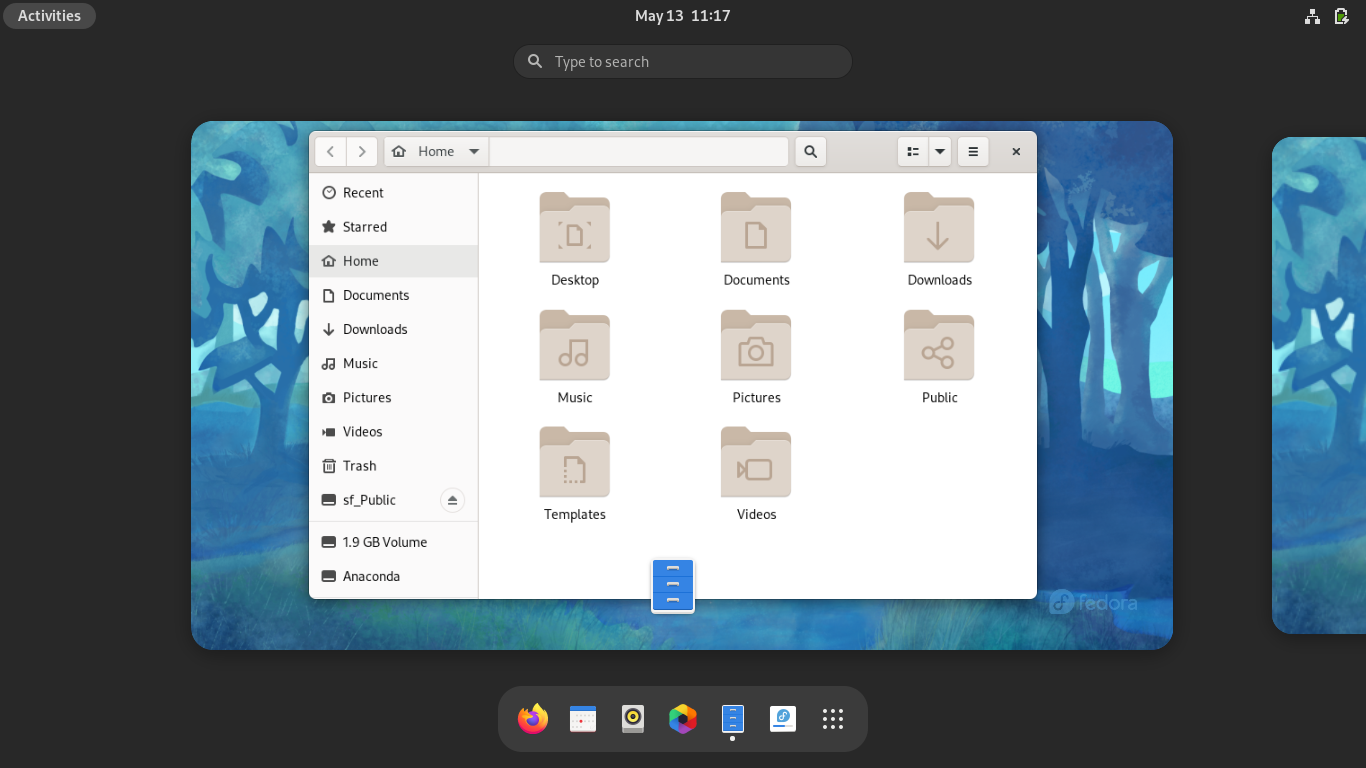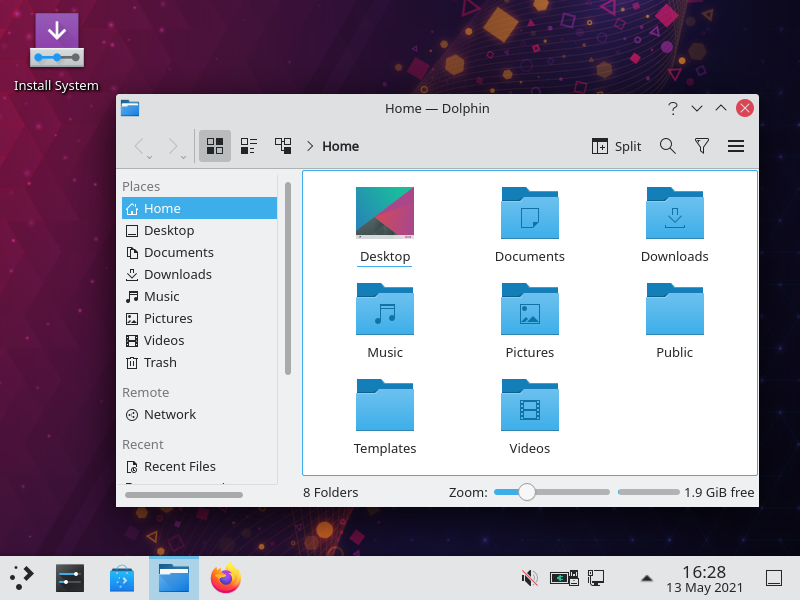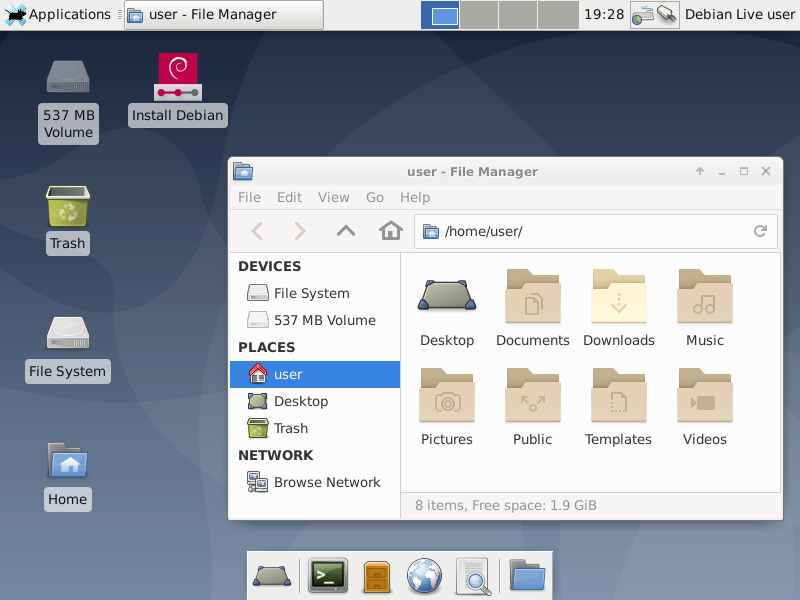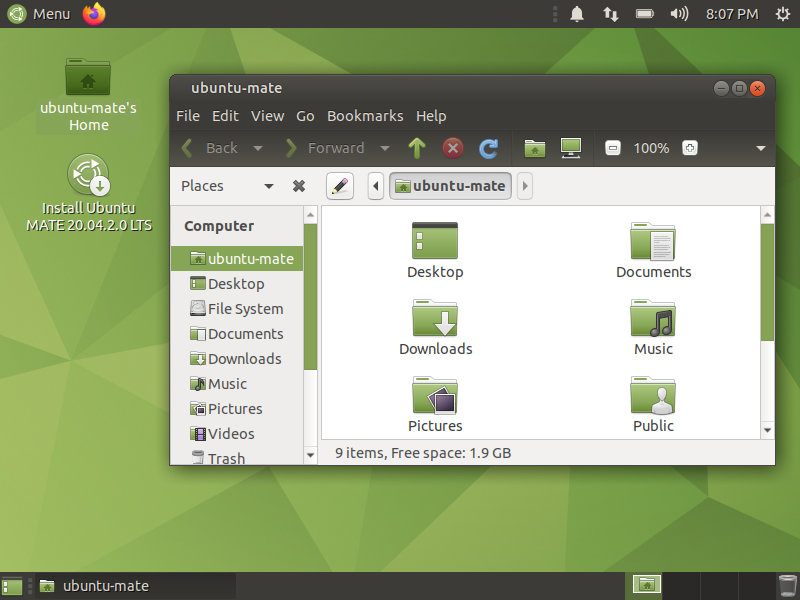2.1. An overview of Linux#
Linux is an operating system developed by Linus Torvalds in 1991. It is released under an open-source licence and the source code is freely available for everyone.
2.1.1. Linux distribution#
A Linux distribution includes the Linux operating system with additional software.
Examples: Debian, Ubuntu, Linux Mint, Fedora, openSUSE etc.,
2.1.2. Desktop environment#
A desktop environment is a graphical user interface that provides easy access to files and applications.
Examples:
Linux distributions might offer additional variants for download, depending on the desktop environment in use.

Fig. 1 GNOME#

Fig. 2 KDE Plasma#

Fig. 3 Xfce#

Fig. 4 MATE#
2.1.3. This book uses Linux Mint#
This book uses Linux Mint (Cinnamon edition) as the reference Linux distribution (Fig. 5).

Fig. 5 Linux Mint with Cinnamon desktop environment#
The software installation and configuration steps discussed in the book have been tested on this distribution (version 20.1).
In the next section, I will show you how to run Linux Mint on your computer or in the cloud.
What about other Linux distributions?#
Ubuntu and derivatives#
The instructions in this guide will work on Ubuntu 20.04 LTS and distributions based on it, with some minor changes. You might need to install additional packages or use different software.
For example, instead of Files (file manager) used in this book, you will use Nautilus or Dolphin.
Other distributions#
Reproducing these steps on other Linux distributions might involve some additional effort.
If there are problems, I recommend you use Linux Mint for following the steps in this book.
Comments